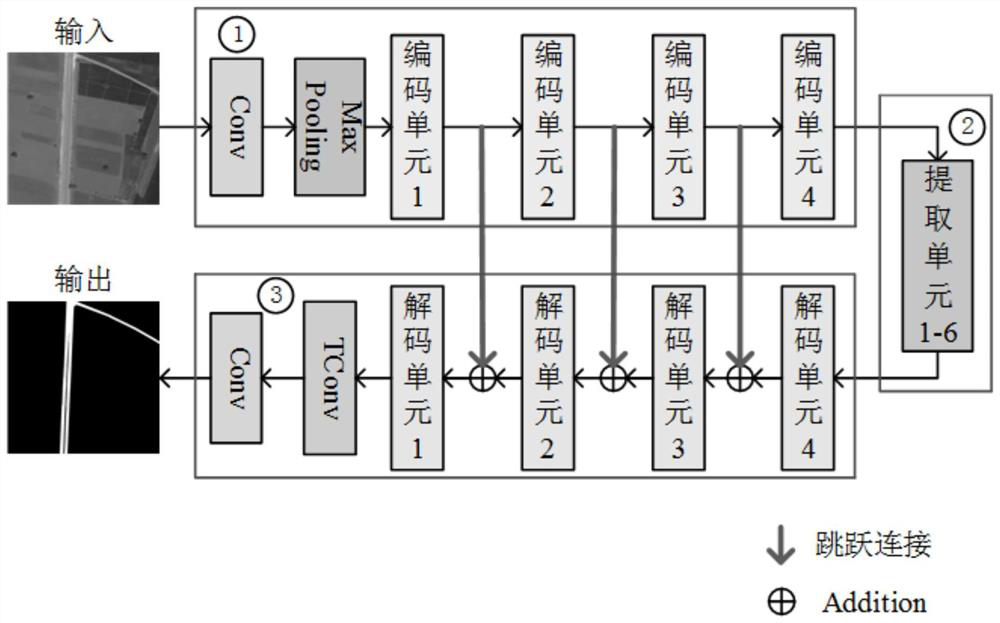Remote sensing image road extraction method based on D-LinkNet
A road extraction and remote sensing image technology, applied in the field of remote sensing image processing, can solve problems such as weak anti-interference ability, insufficient road, adhesion, etc., to avoid degradation problems, strengthen learning, and reduce interference.
- Summary
- Abstract
- Description
- Claims
- Application Information
AI Technical Summary
Problems solved by technology
Method used
Image
Examples
Embodiment Construction
[0035] The present invention will be further described in detail below in conjunction with the accompanying drawings and specific embodiments.
[0036] The invention relates to the field of remote sensing image processing, in particular to a remote sensing image road extraction algorithm based on a semantic segmentation network.
[0037] In view of the deficiencies in the prior art, the purpose of the invention or the technical problem to be solved of the present invention are:
[0038] 1. Realize the feature extraction of remote sensing images and the automatic segmentation of roads;
[0039] 2. Avoid network degradation problems while enhancing the extraction of road features;
[0040] 3. To solve the problem that the road part in the remote sensing image occupies a small proportion of the frame, improve the accuracy of road extraction;
[0041] 4. Aiming at the problem that roads are too similar to rivers, railways and other ground features, avoid the phenomenon of mixing...
PUM
 Login to View More
Login to View More Abstract
Description
Claims
Application Information
 Login to View More
Login to View More - R&D
- Intellectual Property
- Life Sciences
- Materials
- Tech Scout
- Unparalleled Data Quality
- Higher Quality Content
- 60% Fewer Hallucinations
Browse by: Latest US Patents, China's latest patents, Technical Efficacy Thesaurus, Application Domain, Technology Topic, Popular Technical Reports.
© 2025 PatSnap. All rights reserved.Legal|Privacy policy|Modern Slavery Act Transparency Statement|Sitemap|About US| Contact US: help@patsnap.com



